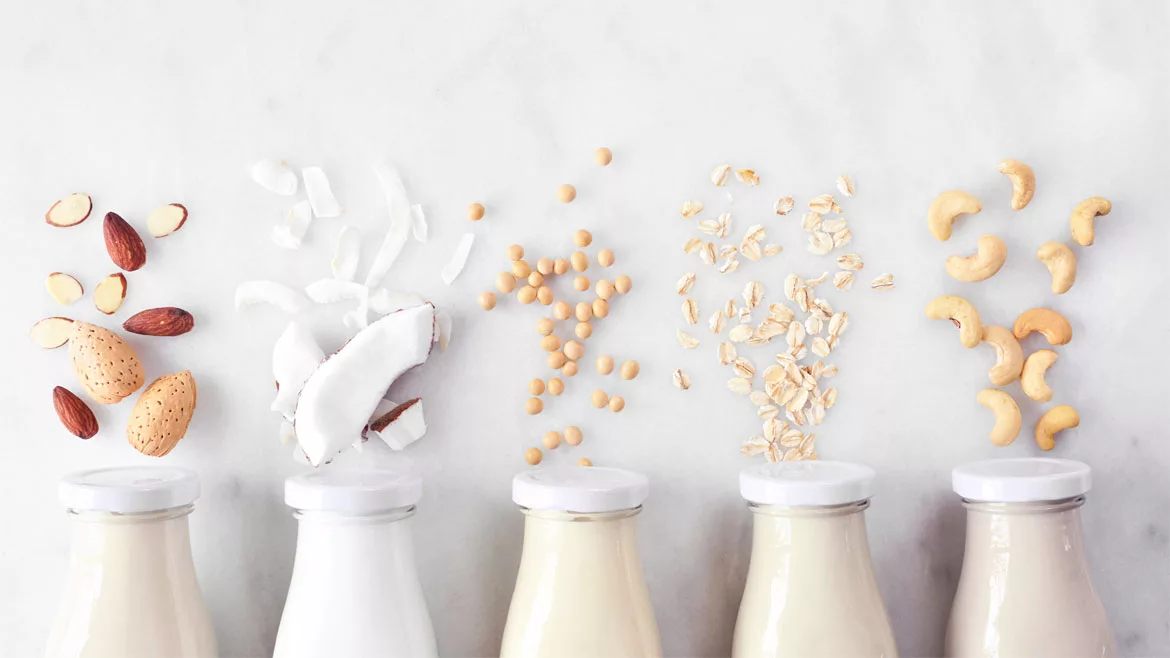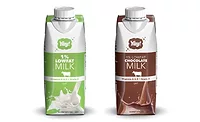Beverage Beat
FDA offers guidance on labels for plant-based milk alternatives
Brand owners could turn to fortification to bridge nutrient gap

Image courtesy of Getty Images
Growing up, the only milk choices in my home was Skim or 2% ― I don’t think we even bought flavored milks. For my children, the options are more diverse ― whole, 2%, ultra-filtered and even plant milks. Although I recall a few friends who had soy milk during my formative years, they remained niche. That no longer is the case.
In an August 2022 report from Beverage Marketing Corporation (BMC) titled “Almond, Oat and Plant Milks in the U.S. through 2026,” the volume of U.S. dairy alternatives is shown to have grown elevenfold from the start of the century to 2021. According to the report, volume sales were 29.2 million gallons in 1998, growing to 100 million gallons by 2004.
“By 2021, plant-based beverages achieved volume of more than 518 million gallons,” the report states. “While this included soy milk and rice milk, it increasingly included drinks made from a variety of grains and nuts, mainly almonds. Oat milk had also emerged as an important part of the market.”
Given this growth in just more than two decades, increased conversations have taken place regarding the use of the word “milk” for these plant-based liquid products. Earlier this year, the U.S. Food and Drug Administration (FDA) announced draft recommendations for the industry on the naming of these products as well as recommendations on voluntary nutrient statements for their labeling.
“Today’s draft guidance was developed to help address the significant increase in plant-based milk alternative products that we have seen become available in the marketplace over the past decade,” said FDA Commissioner Robert M. Califf, M.D., in a statement released on Feb. 22. “The draft recommendations issued today should lead to providing consumers with clear labeling to give them the information they need to make informed nutrition and purchasing decisions on the products they buy for themselves and their families.”
The FDA initially requested information in September 2018 on the labeling of plant-based milk alternatives (PBMA) featuring terms with dairy foods such as “milk.” As such, more than 13,000 responses were received, which showed that consumers generally understand that plant-based dairy alternatives don’t contain milk and even chose these products because they do not contain milk.
“However, many consumers may not be aware of the nutritional differences between milk and PBMA products,” the FDA’s release states. “For example, almond- or oat-based PBMA products may contain calcium and be consumed as a source of calcium, but their overall nutritional content is not similar to milk and fortified soy beverages, and they are not included as part of the dairy group in the Dietary Guidelines 2020-2025.”
The Dietary Guidelines recommend dairy foods, including milk, as part of a healthy diet given the nutrients present. In fact, the Dietary Guidelines only take soy beverages into account in the dairy group as those nutrient compositions are similar to milk, the FDA notes. The other PMBAs vary widely in the key nutrients, and as such factors into the FDA voluntary recommendation.
“Getting enough of the nutrients in milk and fortified soy beverages is especially important to help children grow and develop, and parents and caregivers should know that many plant-based alternatives do not have the same nutrients as milk,” said Susan T. Mayne, Ph.D., director of the FDA’s Center for Food Safety and Applied Nutrition, in a statement. “Food labels are an important way to help support consumer behavior, so we encourage the use of the voluntary nutritional statements to better help customers make informed decisions.”
But voluntary labels might not be the only way that PBMAs will respond to this guidance. Gary Hemphill, managing director of research at BMC, thinks fortification could be in the future for brand owners.
“We may see dairy alternative marketers innovate more by adding different nutrients to their brands,” he says.
This all comes as the plant-based milk market is expected to see a deceleration of the growth in the years prior. In BMC’s report, the compound annual growth rate (CAGR) in volume for the market was 7% for the five-year period ending with 2021. Yet, the market research firm is anticipating a CAGR of 0.8% for plant milks in time period of 2021-2026, for an estimated 540.6 million gallons in 2026.
“A great deal of this expected growth will be attributable to oat milk, which is projected to move upward with a double-digit CAGR and stand second only to almond milk,” BMC’s report states.
As the plant-based milk market adjusts to this new guidance from FDA coupled with a decelerated growth rate, all eyes will be on the leaders in this space to see how they adapt.
Looking for a reprint of this article?
From high-res PDFs to custom plaques, order your copy today!






